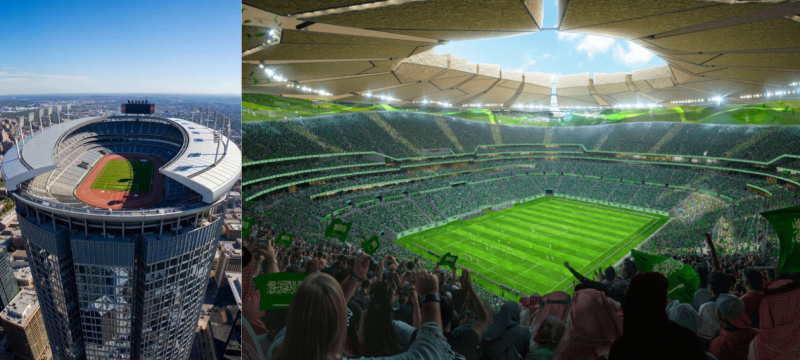Saudi Arabia is taking stadium design to the next level with its bold plans for the NEOM Stadium, a piece of architecture unlike any other. Located in the futuristic city of NEOM, this venue is set to float 350 meters above the desert floor, creating a stunning backdrop for sport and spectacle. Designed to host matches for the 2034 World Cup, the project also aims to become a year-round sports and entertainment hub.
According to design experts at Parametric Architecture, Saudi Arabia is taking stadium design to the next level by integrating cutting-edge engineering and immersive spectator experience. The NEOM Stadium aims to combine function and futuristic form, with elevated seating, panoramic views, and direct access via aerial transport.
The stadium’s elevated height will provide unique views of the surrounding desert and sea. Officials say this daring approach is part of Saudi Arabia’s broader ambition to host global sporting events while showcasing design innovation and sustainability. The capacity is planned at around 46,000, and it will host the group stage, round of 32, round of 16, and quarter-final matches of the 2034 FIFA World Cup.
Furthermore, Saudi Arabia is taking stadium design to the next level by making NEOM Stadium part of a larger mixed-use complex. The venue will serve as a hub for concerts, exhibitions, and futuristic urban living once the tournament concludes. Transport links, hospitality zones, and recreation areas will encircle the structure, turning it into a vibrant all-season destination.
Architects say challenges remain, including structural engineering of a floating facility, environmental impact, and construction logistics. Yet Saudi officials are confident the project will meet timelines and set a new benchmark globally for integrated sports architecture.
As the world watches, Saudi Arabia is not only preparing for the 2034 World Cup, but also proving that design-driven infrastructure can alter the way fans experience sport. The NEOM Stadium stands as a bold statement of this vision and marks a major leap forward in how stadiums can be built for performance, spectacle and sustainability.
Read More : Saudi Arabia Officially Ends Kafala System After 50 Years









